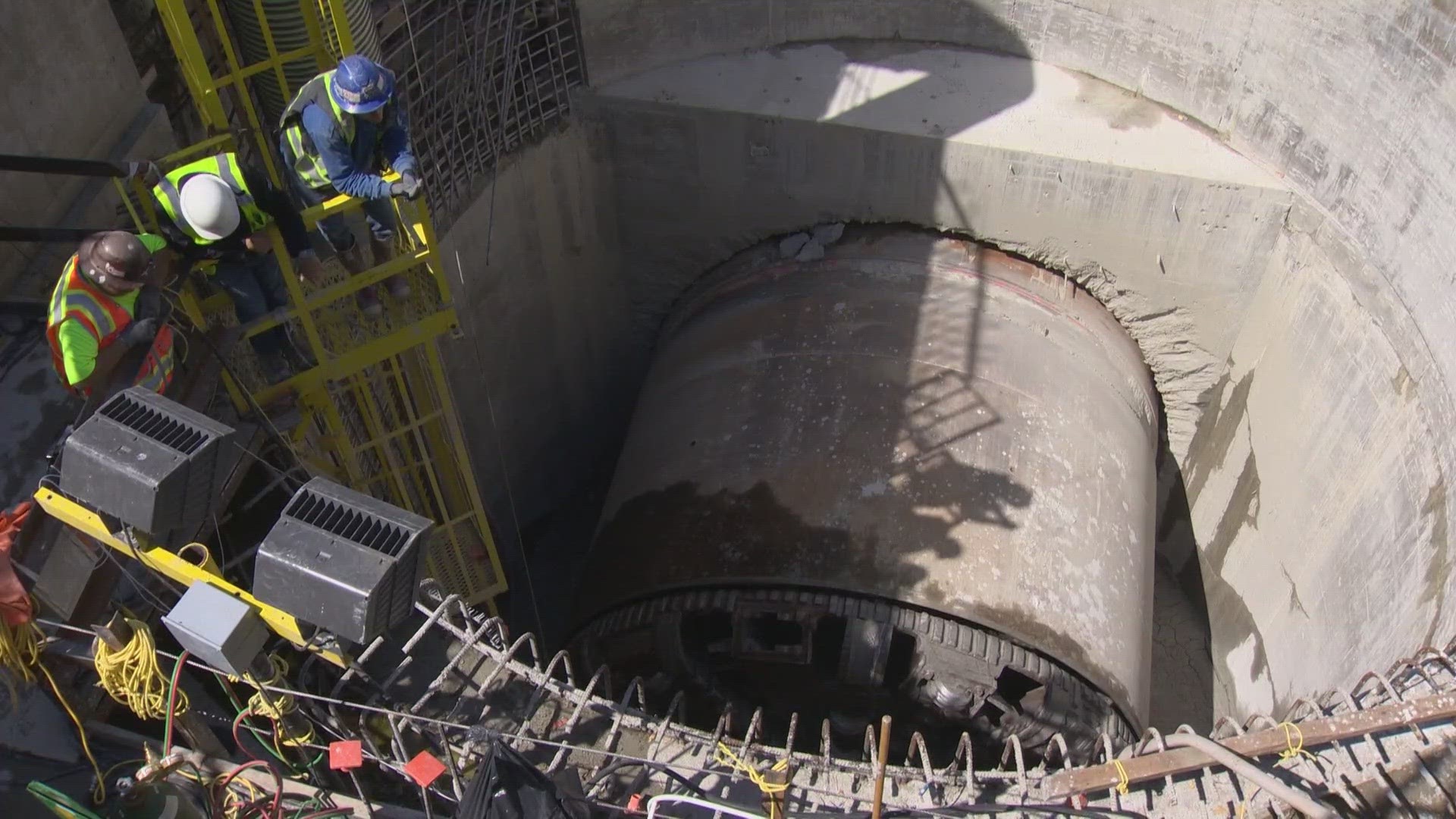SEATTLE — MudHoney, a tunnel boring machine named for a Seattle grunge legend, has finished its journey from Ballard to Wallingford as part of the Ship Canal Water Quality Project, a partnership between Seattle Public Utilities and the King County Wastewater Treatment Division.
The tunnel will store excess stormwater and sewage during heavy rainfall, preventing it from flowing into the Lake Washington Ship Canal, Salmon Bay and Lake Union.
"We're really excited about the water quality benefits for this project and all the other related projects that will really benefit the Ship Canal, Elliott Bay and Puget Sound," King County WTD Director Kamuron Gurol said. "Better for salmon, better for orcas and better for people."
Previously, the area would operate on a "combined sewer" system. During heavy storms, the water could exceed the pipes' capacity, which the city and county call "overflow." That would send untreated sewage into the Ship Canal, impacting marine life and the environment.
A significant portion of the construction work -- boring through the ground to build a tunnel -- is now complete.
"The designers actually designed a perfect place for the machine to break through – that was all pre-designed – and then the contractor basically operates the machine and they're surveying backwards and know exactly where they're at, and they basically brought the machine within 4 inches, right to come through into the Wallingford shaft," Ship Canal Water Quality Project Executive Keith Ward said. "This is a huge moment for us and I want to credit the people operating these machines. They've been working 24 hours a day, 20 people on each shift. They worked really hard, so this is a huge moment for us as both of our agencies but also the contractor as well."
Ward says the machine was moving mostly soil and rock deposited by the last glacier. As it moved, that material would be transported out on train lines, and lifted to be trucked out of town.
When the machine began, it was painted red. Now, most of that's been worn off, leaving just a line of paint behind. Next, the machine will be separated into pieces so it can be lifted, and they will be sent back to the manufacturer so they can be used again. Meanwhile, the county and city will work to finish other infrastructure needed to begin using the tunnel.
"We're really excited to see MudHoney come out of the shaft here, and that work will have to get completed, but along the way, they built the tunnel as they did the excavation, so they'll have to remove all the train system trailing gear, and then there are a variety of other projects that need to get done over the next handful of years so we can actually put this into operation. But we're moving as fast as we can," Gurol said.
SPU says the project was funded in part by the Washington State Department of Ecology and Environmental Protection Agency through State Revolving Fund and Water Infrastructure Finance and Innovation Act loans. You can learn more about it here.

